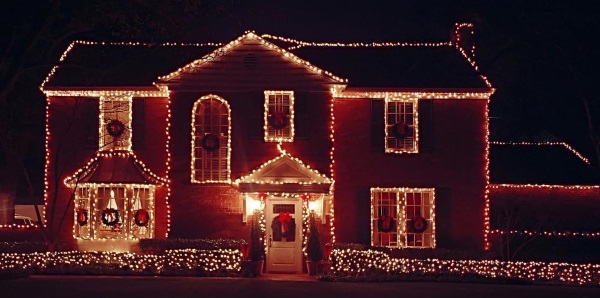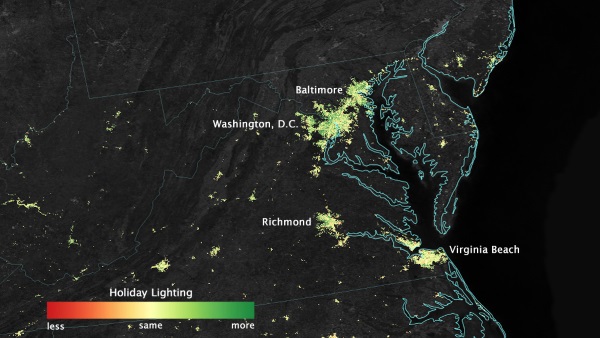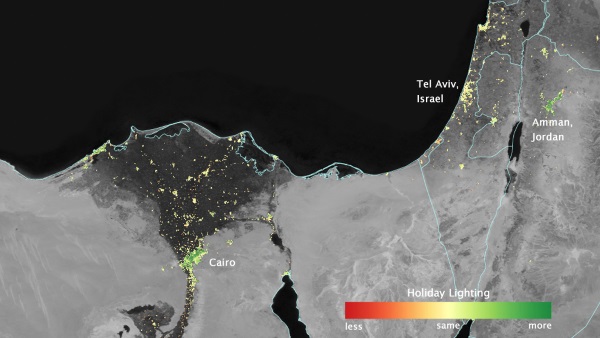If you notice around this time of year, plenty of homes are covered in holiday lights. As it turns out, the world’s holiday lights are so bright that NASA can spot them from space using a NOAA/NASA Suomi National Polar-orbiting Partnership satellite.

NASA scientists have identified how patterns in nighttime light intensity change during major holiday seasons — particularly Christmas and New Year’s in the United States and the holy month of Ramadan in the Middle East.
Data shows that nighttime lights in the United States shine 20% to 50% brighter during Christmas and New Year’s than the rest of the year. It even shows that in some Middle Eastern cities, nighttime lights shine more than 50% brighter during Ramadan.
 Dark green pixels are areas where lights are 50% brighter (or more) during December.
Dark green pixels are areas where lights are 50% brighter (or more) during December.
Image Credit: NASA's Earth Observatory/Jesse Allen
The joint NASA/National Oceanic and Atmospheric Administration (NOAA) mission works with an instrument called the Visible Infrared Imaging Radiometer Suite (VIIRS) which can observe the dark side of the planet and detect the glow of lights in cities worldwide.
Two years ago the organizations released a map called “Earth at Night” from the data collected by this instrument which were based on monthly long-term averages of data collected on nights with no clouds or moonlight.
Now an algorithm has been developed at NASA’s Goodard Space Flight Center in Greenbelt, MD that filters out moonlight, clouds, and airborne particles to capture just city lights.
What the researchers discovered was that in the United States the lights on the map begin getting brighter the day after Thanksgiving and continue through New Year’s Day.
In most suburbs and outskirts of major cities, light intensity increased by 30% to 50%. Lights in the central urban areas did not increase as much as in the suburbs, but still brightened by 20% to 30%.
 Dark green pixels are areas where the lights are 50% brighter (or more) during Ramadan.
Dark green pixels are areas where the lights are 50% brighter (or more) during Ramadan.
Image Credit: NASA's Earth Observatory/Jesse Allen
They also studied the data of Cairo in 2012. When the team investigated the satellite record, they found that the large increase in light output in Egypt's capital corresponded with the holy month of Ramadan. During Ramadan, Muslims fast during the day, pushing meals and many social gatherings as well as markets and commerce to nighttime hours. Light use in Saudi Arabian cities, such as Riyadh and Jeddah, increased by about 60% to 100% through the month of Ramadan.
For more images and information visit NASA’s website.
Advertisement
Learn more about Electronic Products Magazine





